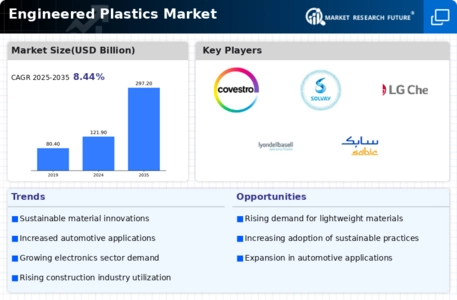Market Share
Engineered Plastics Market Share Analysis
Companies employ different market share positioning strategies within the highly competitive realm of the Engineered Plastics Market to establish themselves and maintain a competitive advantage. Among the commonest approaches in this scenario are attempts aimed at creating unique and innovative engineered plastic products that can be identified distinctively from what competitors offer. A key strategy employed by businesses in this field is cost leadership. The companies optimize their production processes, decrease manufacturing expenses, and leverage economies of scale in order to have low prices for their engineered plastic goods, which attract a larger consumer base. Sometimes, cost leadership may involve strategic alliances with suppliers so as to obtain cheaper inputs, thereby keeping its price competition power intact. For companies in the Engineered Plastics Market, differentiation could be attained through market segmentation, which involves tailoring products to specific customer segments. This could be achieved by understanding the particular needs of various industries and applications, leading to the development of focused solutions that meet specific challenges. Global expansion is another strategic approach used by players within the Engineered Plastics Market. It is a way of going beyond domestic borders since most businesses are striving to form an international network because industries are increasingly interconnected on a global level. This can be done through joint venture acquisitions and setting up production facilities, among others. This helps companies move into new markets, increase sales, diversify revenues, and hedge against risks emanating from overreliance on a particular country. Strategic alliances and collaborations play a significant role in ensuring that firms maintain good market share positioning in the Engineered Plastics Market. Through creating partnerships with other corporations, organizations can pool their resources together, access complementary capabilities, and combine their strengths. In addition to this strategy, brand building is part of market positioning strategies. By developing a reputable positive image for itself, a company distinguishes itself from its competitors. However, engineered plastics are complexly manufactured; nevertheless, the utility of engineered plastics is globally prevalent, intact, and strong. Such services as resistance to heat or high-performance attributes are significantly improved compared to traditional plastics, hence increasing demand across end use industries.









Leave a Comment